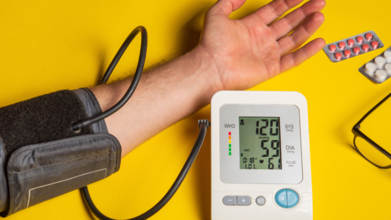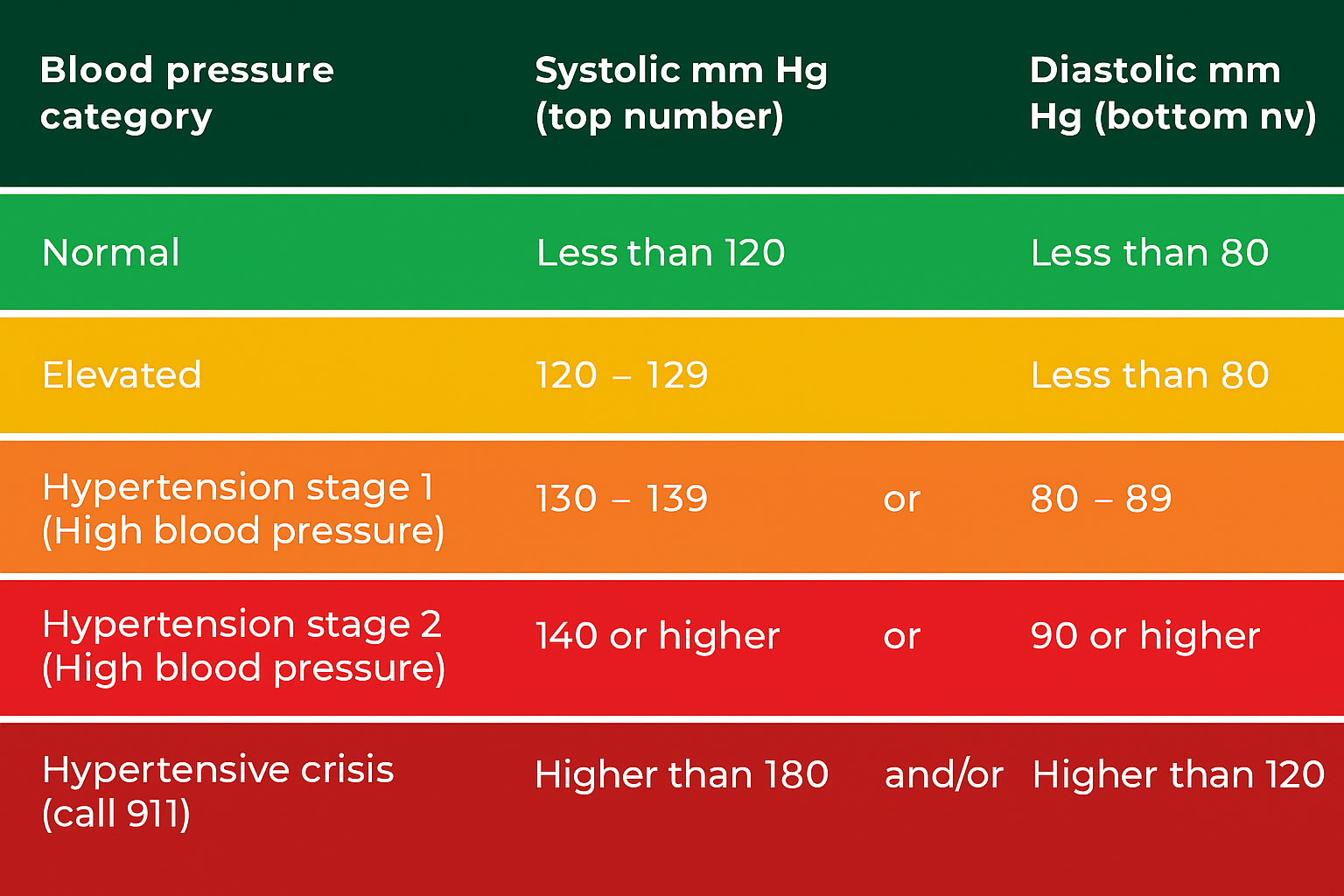- Health Conditions A-Z
- Health & Wellness
- Nutrition
- Fitness
- Health News
- Ayurveda
- Videos
- Medicine A-Z
- Parenting
- Web Stories
Can Marijuana Be Used As A Recreational Drug, Legally?

Credits: Canva
For the first time in state history, a bill to legalize recreational marijuana has passed one chamber of the Pennsylvania legislature. The state House approved the proposal on Wednesday. It marked a major milestone in years-long push to reform cannabis laws. If the law is passed by the Senate, the bill would then allow residents aged 21 and older to legally purchase and use marijuana.
The bill is led by Democratic Representative Rick Krajewski of Philadelphia aims to create a controlled cannabis market while promoting public safety, social equity, and economic opportunity.
What Is In The Bill?
The proposal includes several key provisions:
Legal access for adults 21+ to purchase and use marijuana
Sales controlled by the state: The Pennsylvania Liquor Control Board (PLCB) would oversee pricing, production, testing, and distribution, though cannabis would be sold at separate outlets—not in liquor stores.
Home cultivation: Residents could grow a limited number of marijuana plants if they obtain a home-grow permit.
Expungement of prior offenses: Past low-level marijuana convictions would be erased, with funds set aside to handle these legal processes.
Tax revenue use: The expected $500+ million in yearly revenue would support Medicaid, public transit, struggling schools, substance abuse programs, minority-owned businesses, and disadvantaged communities.
Why It’s Controversial
Despite the bill's passage in the House with unanimous Democratic support, Republicans strongly opposed it. Critics argue the bill could:
- Increase marijuana use among minors
- Cause workplace safety and health issues
- Conflict with federal laws where marijuana remains illegal
Rep. Marc Anderson (R-York County) warned that the idea of only adults accessing marijuana is “to deny reason and logic,” claiming that youth access will increase.
Additionally, some legal experts and Republicans like Rep. Tim Bonner (R-Mercer County) have raised concerns about the bill's expungement process, arguing it could interfere with state court authority.
What’s Next? The Senate Hurdle
The bill now heads to the state Senate, where its future is uncertain. Democratic Governor Josh Shapiro included marijuana legalization in his budget proposal, relying on new tax revenue, but Senate Republicans remain unconvinced.
One sticking point is the model of distribution. Sen. Dan Laughlin (R-Erie County), a key figure on the issue, has said there’s “no path forward” for a system that relies on state-controlled stores. Instead, some senators prefer a model that licenses private dispensaries, similar to other states.
How Pennsylvania Compares
If passed, Pennsylvania would join 24 other states that have legalized recreational marijuana. The state already allows medical marijuana, legalized in 2016, but this bill would expand access to the general adult population.
Still, cannabis activists like Chris Goldstein from NORML believe the bill’s centralized model doesn’t support local entrepreneurs and differs too much from more decentralized, consumer-friendly approaches seen elsewhere.
Mounjaro Price Hike: Here's All That You Need To Know About This Weightloss Drug

Credits: Canva
From September, Eli Lilly will raise the UK price of its diabetes and weight-loss drug Mounjaro by as much as 170%. The US pharmaceutical giant says the increase will align UK costs with those in other developed nations and address “pricing disparities.”
The NHS will not be affected for now. The price surge is aimed at private patients and providers, who often negotiate discounts behind closed clinic doors. But for those paying out of pocket, the jump is steep, the highest monthly dose will soar from £122 to £330, while lower doses will rise by 45 to 138 per cent.
For many, this is more than a wallet shock. It could mean rethinking whether to continue treatment, especially since Mounjaro is often taken long term to maintain results. With so much at stake, here’s a closer look at what the drug does, who it’s for, and the benefits and risks to consider.
What is Mounjaro?
Mounjaro, the brand name for tirzepatide, is an injectable medication, notes Diabetes UK, and is approved in the UK for type 2 diabetes and, more recently, for obesity. It is part of a newer class of drugs that not only control blood sugar but also promote significant weight loss.
Unlike earlier medications such as Ozempic and Wegovy, both of which were based on semaglutide, Mounjaro works by activating two hormone receptors: GLP-1 and GIP, at the same time. This “dual agonist” approach appears to produce greater weight loss than single-receptor drugs.
How Does it Work?
Mounjaro increases levels of natural hormones called incretins. These hormones help the body release more insulin when needed, reduce glucose production by the liver, and slow digestion so you feel fuller for longer.
The result is a two-pronged effect:
Better blood sugar control in people with type 2 diabetes
Reduced appetite and calorie intake leading to weight loss
In clinical trials, people taking the highest dose (15 mg weekly) lost up to 21 per cent of their body weight. That’s on par with some bariatric surgeries, but without the invasive procedure.
Who Can Take Mounjaro?
For type 2 diabetes
Adults aged 18 and over who have not been able to control blood sugar with other medications, or who cannot tolerate them due to side effects or other conditions.
Typically prescribed if the person also has a BMI of 35 kg/m² or higher with obesity-related health issues, though exceptions exist for those with lower BMIs in certain ethnic groups or specific medical needs.
For obesity
In England and Wales: Recommended for people with a BMI of at least 35 kg/m² and related health conditions, including type 2 diabetes. Lower thresholds apply for some ethnic groups.
In Scotland: Available for people with a BMI of at least 30 kg/m² plus one obesity-related condition.
The Benefits
Significant weight loss that can improve or reverse obesity-related health problems
Improved blood sugar control in people with type 2 diabetes
Once-weekly dosing with a pre-filled pen for convenience
May reduce risk of complications from diabetes, though more research is ongoing for cardiovascular benefits
The Risks and Side Effects
Like other drugs in its class, Mounjaro can cause:
- Nausea, vomiting, diarrhoea, constipation, indigestion
- Risk of low blood sugar if taken with insulin or certain other diabetes drugs
- Possible risk of high blood sugar if insulin doses are cut too quickly
- In animal studies, an increased risk of thyroid tumors, whether this applies to humans is still unknown
Long-term safety data is limited since the drug is relatively new. Some people may also regain weight if they stop taking it.
Cost and Access Challenges
On the NHS, Mounjaro is free for those eligible under treatment guidelines, but rollout is gradual due to costs and support service limitations. Access for weight loss alone is prioritized for those with the highest clinical need.
Private prescriptions vary in cost and availability. After the September price hike, the financial burden will be significant for many patients, especially since ongoing treatment is often required to maintain benefits.
Life Without the Jab
If the higher cost puts Mounjaro out of reach, lifestyle changes can still deliver meaningful results. Strategies that mimic some of its effects include:
- Eating high-protein meals to promote satiety
- Choosing high-fibre foods to slow digestion
- Limiting ultra-processed foods that spike blood sugar
- Regular physical activity to improve insulin sensitivity
New Blood Pressure Guidelines In The US Place Prevention And Early Treatment On Top

Credits: Canva
New blood pressure guidelines were released by the American Heart Association and the American College of Cardiology this Thursday. These guidelines focus proactively look at blood pressure levels, meaning the focus is from early on, from prevention and early treatment. So, next time you get your blood pressure checked, you may expect your medical provider to be a bit more aggressive if high levels are seen.
Why New Blood Pressure Guidelines Now?
Since 2017, this is the first time a new set of guidelines has been issued. The reason being the growing numbers of heart diseases and for it persistently being the No. 1 killer in the world. The catch is, despite it being the top killer, blood pressure is one of the most easily modifiable ways to avoid such a death. Keeping your blood pressure in check can also reduce your risk of kidney disease, type 2 diabetes, and dementia.
What Is Happening In The US?
In the US, nearly half of all adults population have higher than the normal levels of blood pressure. As per the guidelines, the normal pressure is less than 120/80mm Hg, and elevated blood pressure is 120-129/80mm Hg.
If you are at 130/80mm Hg or higher, the new guidelines allow the medical professional for you to make lifestyle changes.
What Is Blood Pressure, How Is It Measured?

As per the National Institute of Health, US (NIH), blood pressure is the pressure, measured in millimeters of mercury, within the major arterial system of the body. It is separated into systolic and diastolic determination.
Systolic means the maximum blood pressure during contraction of ventricles and diastolic pressure means the maximum pressure recorded just prior to the next contraction.
In simpler language, blood pressure is the force of blood pushing against the walls of your arteries as your heart pumps blood.
The blood pressure is usually written as the systolic pressure over the diastolic pressure, for instance 120/80mm Hg.
High blood pressure is also often called the "silent killer", because it rarely shows any symptoms However, it forces the hard and vessels to work harder. Without timely treatment, this can also damage arteries and raise the risk of heart attack, stroke, kidney diseases and dementia.
What The New Blood Pressure Guideline Say
According to the updated blood pressure guidelines from the American Heart Association, the threshold for early intervention has changed.
If systolic blood pressure falls between 130 and 139, doctors are now advised to first recommend lifestyle changes rather than immediate medication.
After three to six months, if blood pressure remains above target despite these changes, medication should be introduced.
This marks a shift from 2017 recommendations, where anyone with a systolic reading above 140 was typically prescribed both medication and lifestyle modifications from the outset.
Why Does It Matter?
The goal is to control blood pressure earlier and more effectively to prevent cardiovascular disease, stroke, kidney damage, and cognitive decline.
“We now know that lowering blood pressure also helps reduce the risk for dementia,” said Dr. Daniel Jones, chair of the guideline writing committee, as reported by the CNN. “That’s a significant finding in this update.”
Lifestyle Changes That Can Help, As Per The New Blood Pressure Guidelines

- Maintaining a healthy weight
- Eating a heart-friendly diet
- Reducing salt intake
- Managing stress
- Engaging in at least 150 minutes of moderate physical activity per week
- Adding resistance training such as weightlifting
New Stance on Alcohol
One of the biggest changes is the recommendation to avoid alcohol altogether.
In 2017, the guidance allowed up to one drink per day for women and up to two for men. Now, evidence linking alcohol to elevated blood pressure is stronger, leading experts to set abstinence as the ideal.
For those who do choose to drink, the advice is to limit it to less than one drink a day for women and less than two for men.
Protecting Brain Health
Beyond heart and kidney protection, the guidelines underscore the importance of blood pressure control in lowering the risk of dementia. The link between high blood pressure and cognitive decline has been reinforced by new research, making early intervention even more crucial.
Mounjaro Price Increase: Eli Lilly to Hike UK Cost of Weight-Loss Drug by 170%

Credits: Canva
Eli Lilly will significantly increase the UK price of its weight-loss and diabetes drug Mounjaro from September. The company says the rise is intended to align UK costs with those in other developed nations and address pricing disparities. The US pharma giant has announced it will raise the price of its popular drug, also prescribed for type 2 diabetes, by as much as 170 per cent.
According to Lilly, the hike will bring UK prices more in line with other wealthy nations in Europe and beyond.
The NHS Gets a Pass… For Now
Know that the NHS won't be hit by this increase. The higher prices are aimed squarely at private patients and providers, who can negotiate hush-hush discounts behind closed clinic doors. Reports suggest that the highest monthly dose will leap from £122 to £330, while lower doses will see bumps between 45 and 138 per cent.
If you have been relying on Mounjaro as your secret weapon against stubborn kilos, this could be the financial equivalent of your personal trainer suddenly charging three times more for the same number of push-ups.
Life Without the Jab
Of course, for some, the looming price jump is more than a budget annoyance; it is a motivation crisis. But you do not actually need to stick a needle in your thigh to get “Mounjaro-like” weight loss.
Here is how to hack your habits so your body thinks it is on the metabolism-boosting fast track, without any pharmaceutical intervention.
Eat Like You Mean It
Most of what Mounjaro does can be replicated through daily habits. Step one? Food. High-protein, high-fibre, healthy-fat meals keep you full longer, suppress sugar cravings, and make overeating less tempting. Avoid large meals, sugar, and processed food. And slow, mindful eating gives your brain time to catch up with your stomach.
Even your water bottle can become a weight-loss tool. A lot of what people think is hunger is actually dehydration. Electrolyte-rich water—with sodium, potassium, and magnesium—can curb cravings and keep energy levels stable.
Pick Up Heavy Things
While pounding the treadmill has its place, strength training is the real game-changer for long-term fat loss. Muscle tissue burns more calories at rest than fat. Plus, medications like Mounjaro and Ozempic can cause muscle loss if you are not lifting weights, leading to a slimmer but softer physique. Resistance training preserves muscle and shapes the body more effectively.
Sleep, Stress, and Staying the Course
Before you dismiss rest as “lazy time”, remember it is a weight-loss essential. Poor sleep and chronic stress raise cortisol and blood sugar, making fat loss harder. Consistency is king. A regular schedule for eating, exercising, and resting does more for your metabolism than any magic shot.
Surgery, Skincare, and Staying Realistic
Medication-induced weight loss can come with aesthetic and medical trade-offs. Rapid weight loss often means loose, sagging skin, and there are reports linking GLP-1 drugs to inflammatory issues and even certain cancers.
There are alternatives that avoid the “melted candle” effect of sudden slimming. Swallowable balloons reduce stomach capacity gradually, minimising skin laxity. For sculpting, there is 360 body contouring or liposuction with skin-tightening tech.
If you are needle-shy but still chasing definition, go for cryotherapy or lipolytic injections for stubborn fat. They are great for shape refinement, not full-body weight loss.
When the Price Tag Becomes the Push
For many, the new Mounjaro pricing might be the gentle nudge needed to ditch the drug and rediscover the old-school ways of getting lean: mindful eating, muscle-building, and sleep that actually lets your body recover.
The reality is, drugs like Mounjaro can be revolutionary for people with serious metabolic issues, but for those using it as a shortcut, the financial bite may soon feel sharper than the injection. Whether you keep your jab or kick it, remember that sustainable weight loss has always been less about the price tag on your medicine cabinet and more about the habits that shape your daily life.
© 2024 Bennett, Coleman & Company Limited



